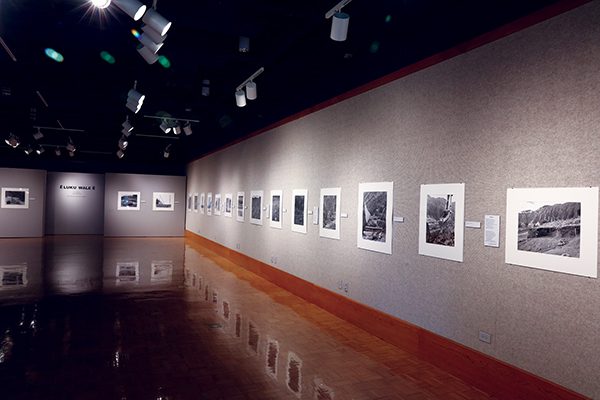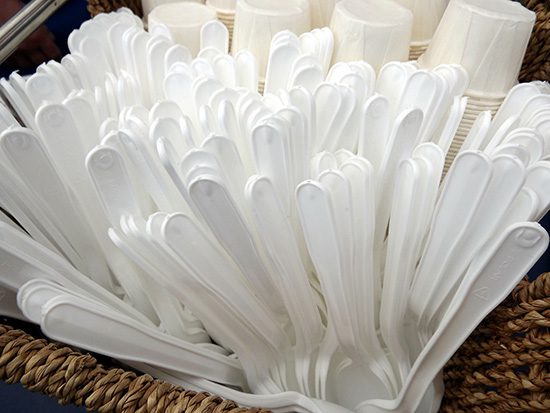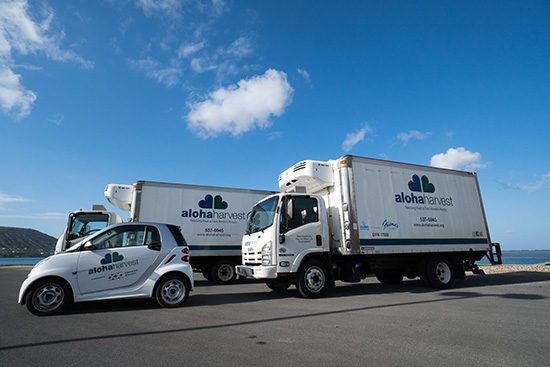
A new exhibit at Gallery ‘Iolani showcases the photography of WCC art professor and humanities department chair Mark Hamasaki and former art lecturer Kapulani Landgraf.
The exhibit, titled Ē Luke Wale Ē, bears witness to the changes in the land as they were taking place during the building of the H-3 freeway. Hamasaki and Landgraf began documenting the lengthy process when the community’s concerns rose over the desecration of burial sites and religious structures along the freeway’s path. The entire project took over eight years to complete and acts as a record for new generations to understand what was lost in the name of progress.
“I want people to know the environmental impact of building this freeway,” Hamasaki said. “Right now, you don’t really see it because it’s been there and you’re elevated above the ground. This was going through pristine land.”
Originally proposed in 1960 just after Hawai‘i became the 50th State, the 15-mile freeway connects Pearl Harbor Naval Base in Pu‘uloa and the Marine Corps Base Hawai‘i on Mōkapu Peninsula in Kāne‘ohe. It tunnels through the Ko‘olau Mountains between Hālawa and Haʻikū valleys.
Community groups led by Native Hawaiians, cultural preservationists and environmentalists succeeded in delaying the project but were ultimately unable to stop it. In 1986, Hawai‘i’s Senator Daniel Inouye removed the last obstacles by pushing through Congress an exemption for the H-3 from the Transportation Act, which would have enforced environmental laws and restricted the building of the freeway. In 1997, the freeway was completed despite two and a half decades of protest and litigation.
The highway was also promoted in the community as a means of speeding up vehicular travel and reducing traffic on O‘ahu’s other roadways, but members of the community continued to express heartache, grief and anger over the impact of the H-3 freeway on the ‘aina. Human and animal bones, along with approximately 61,000 artifacts and samples, were collected in Hālawa Valley during the freeway’s construction, the bulk of the artifacts being small basalt stone flakes and cuttings from stone tools used by ancient Hawaiians. The project ended up being one of the most expensive in U.S. history, costing approximately $80 million per mile.
O’ahu local Mahealani Cypher was a key figure in fighting construction when she learned about the adverse impacts the freeway would have on the lands of Ko`olaupoko (Windward O`ahu).
“We felt called, compelled by our ancestors, to do what we could to respect and honor these special places, the heiau (temple sites) and iwi kūpuna (ancient Hawaiian burial grounds),” Cypher said.
When first viewing the photos in Ē Luku Wale Ē, Cypher said it reopened the wounds of the battle to stop H-3.
“There were many tears shed and even lives lost during that struggle, so I cannot honor this display as anything but a demonstration of the dominance of western influence over the Hawaiian people.”
Cypher feels that the Ē Luku Wale Ē exhibit represents the destruction of great beauty, as well as the dishonor to her ancestral heritage and the many burials that were disturbed.
“The loss to our heritage has, perhaps, been the least visible,” she said. “It is believed that the ancestors continue to cry out their dismay at the destruction reflected in this impressive and disturbing display of pictures, images of colonization of our island’s first people and their lands. Countless heiau and wahi pana (famous places) were disturbed in the building of H-3. The state and federal government allowed the bulldozers to follow in the shadow of the archaeological teams right at their backs, bulldozing sites as soon as the researchers had done any data-gathering in the area.”
UH Mānoa architecture student Patrick Hascall attended the exhibit opening and marveled at the technical work of Hamasaki and Landgraf.
“Knowing the type of equipment they used and the terrain they conquered, I can’t imagine how difficult this project was to put together,” Hascall said. “Their images show just how destructive being ‘constructive’ can be. I think that everyone should see these pictures so that they understand just what went into building the H-3 and what sacrifices had to be made.”
Hascall also had a special connection to the exhibit, as he received his associate’s degree at WCC and had Hamasaki as a teacher.
“I took his class five times solely because I loved photography and thought Mark was an exceptional teacher,” he said. “My father is a retired photographer, of which I inherited all of his archaic equipment, which I’ve always wanted to learn how to use. With Mark’s expertise and his help, I developed a love for photography that I will take with me to my grave.”
Though the exhibit depicts heavy devastation caused by the freeway construction, the photos also praise what remains: the mountains, one of the ‘āina’s most enduring bodies.
With his work, Hamasaki hopes that future generations will be able to see the environmental cost the development has had on the island and will prevent similar acts in the future.
“This timeline shows you how long it took to build the freeway; the takeaway would be to follow the rules, follow the proper procedures,” Hamasaki said. “Learn about the place names, the history of the place. We all have a responsibility to take care of the land, the place we live, the place we call home.”
The exhibit runs until May 6 at Gallery ‘Iolani, located adjacent to Palikū Theatre, and is open 1-5 p.m. Mondays through Fridays and Sundays, as well as 6-8 p.m. on Mondays and Tuesdays.
by Eliana Christianson, Ka ‘Ohana Editor in Chief





